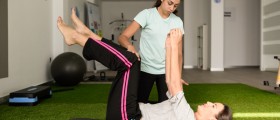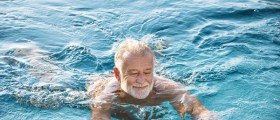
JRA is short for juvenile arthritis, a condition predominantly affecting children under the age of 16. It leads to inflammation of joints, swelling, pain, stiffness and reduced mobility. The good thing is that most children soon recover and never experience the same symptoms again. Others, however, require complex treatment and many different approaches in order for the condition to be brought under control.
As for physical therapy for JRA doctors may opt for heat-cold treatment, massage, electrical stimulation and ultrasound. With any of the mentioned the child's body gets well prepared for one of the most important parts of the treatment - exercise program.
Heat - Cold Treatment
Heat, once applied to the affected joints, reduces the rigidity and increases the flexibility of fibrous tissue present in joint capsules and tendons. This subsequently reduces pain and muscle spasms. Heat treatment is particularly efficient if it is applied right before stretching exercises. Children suffering from hip JRA may benefit a lot from ultrasound which once it is applied creates heat deep in the affected joint.
The purpose of cold treatment is to reduce pain and swelling. It is recommended in the acute phase of the disease. The treatment must never last longer that 20 minutes because of potential side effects such as frostbite, cold urticaria, cryoglobulinemia and Raynaud phenomenon.
Massage and Electrical Stimulation
Massage keeps deep tissues elastic and prevents adhesions. It is also efficient against pain. The best effects are achieved if massage is applied together with heat treatment before the person starts to exercise.
As for electrical stimulation, it is of major importance for patients with excessive muscle atrophy and individuals who simply cannot exercise.
Exercise for JRA
Therapeutic exercises represent the cornerstone of treatment for JRA. There are plenty of exercises to choose from including aquatic exercises, positioning, passive ROM exercises and isometric exercises.
Aquatic exercises (e.g. swimming) are crucial for pain management and prevention of muscle spasms. These exercises must be moderate in intensity and should last for about 30 minutes. They are also supposed to be performed on a daily basis. Passive ROM exercises are recommended once the active phase of JRA subsides. These are actually stretching exercises also necessary to be performed every day. Furthermore, patients are taught exercises which increase the strength of muscles around the affected joints. So, with a well created exercise plan the child may overcome disability associated with the condition and life a healthy life without a lot of restrictions.

















Your thoughts on this
Loading...